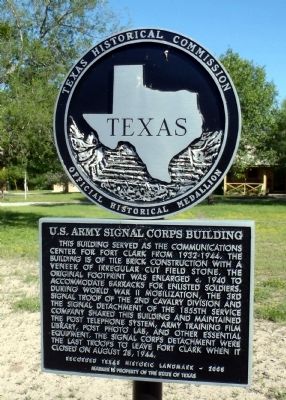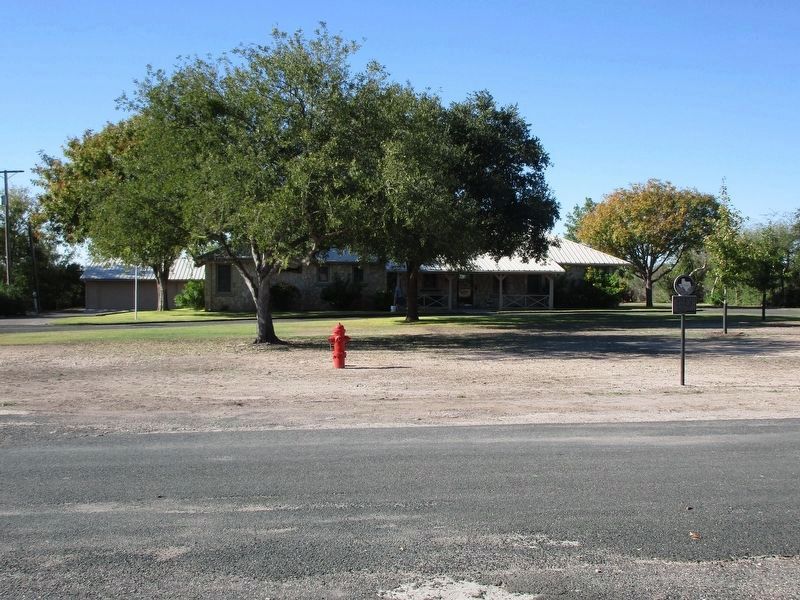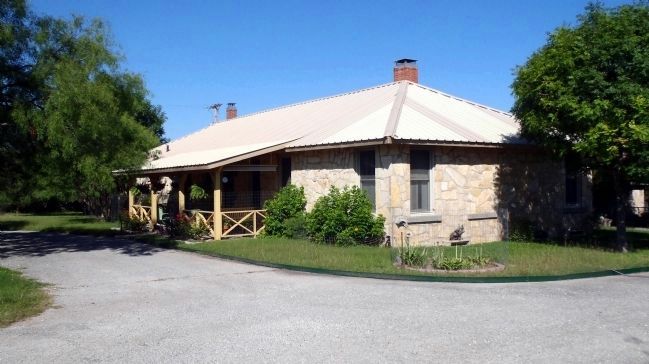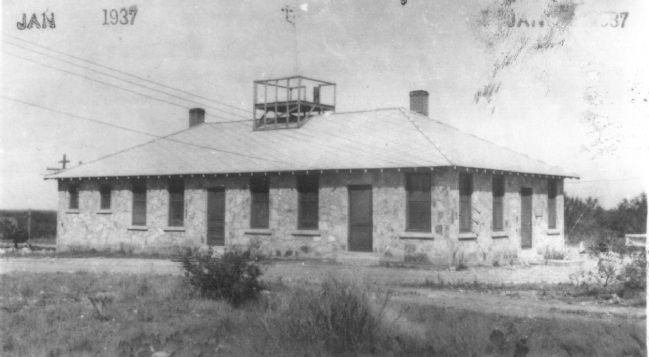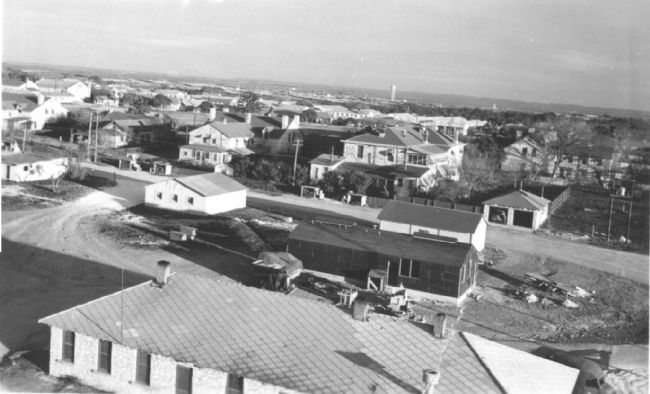Near Brackettville in Kinney County, Texas — The American South (West South Central)
U.S. Army Signal Corps Building
Erected 2008 by Texas Historical Commission. (Marker Number 15094.)
Topics. This historical marker is listed in these topic lists: Communications • War, World II. A significant historical year for this entry is 1940.
Location. 29° 18.294′ N, 100° 25.468′ W. Marker is near Brackettville, Texas, in Kinney County. Marker is at the intersection of McClain Road and Grant Avenue, on the right when traveling south on McClain Road. Marker is located on Fort Clark Springs in the Fort Clark National Register Historic District and is accessible to the public. Touch for map. Marker is at or near this postal address: 202 McClain Road, Brackettville TX 78832, United States of America. Touch for directions.
Other nearby markers. At least 8 other markers are within walking distance of this marker. Staff Officers' Quarters (within shouting distance of this marker); Adjutant's Quarters (Quarters #20) (about 300 feet away, measured in a direct line); Commanding Officer's Quarters (about 500 feet away); Officers' Row Quarters (approx. 0.2 miles away); Married Officers' Quarters 8-9 (approx. 0.2 miles away); Remolino Raid (approx. 0.2 miles away); Officers Quarters 2-3 and 4 (approx. 0.2 miles away); 1873 Infantry Barracks (approx. 0.2 miles away). Touch for a list and map of all markers in Brackettville.
Regarding U.S. Army Signal Corps Building. This unique special purpose building was once home to soldiers of the fort’s Signal Corps detachment.
Fort Clark’s earliest recorded “signal” accomplishment was the first telegraph line from the fort to the Menger Hotel in San Antonio completed by 2nd Lieutenant William Paulding of the 10th Infantry in September 1875. A Signal Corps detachment was first assigned to Fort Clark in January 1906. From that date the Signal Corps was vital “permanent party” for the garrison. Advances in military signal communications from the original telegraph, to carrier pigeons, to the telephone, the radio, and radio teletype saw the Signal Corps play an increasingly important roll in life on the post and its contact with the outside world. So much so that ultimately the signal detachment required a stand alone facility to efficiently perform its function.
In the years leading up to World War II, the importance of rapid communications was recognized and massive strides made in the development of communications equipment. Rather than being an adjunct to other signal corps functions, specialized facilities were needed to house this equipment and the personnel trained in its use.
Fort Clark’s signal building carried building number 95 during its Army service. Construction was carried out in two phases, beginning in 1931-32 when the post experienced a number of major construction projects. Twentieth century construction on the fort continued to acknowledge the abundance of locally available stone although the method of construction varied from that of the earlier buildings. Construction is tile brick veneered with an irregular cut field stone and a plain mortar joint, the same style as other permanent buildings built on the fort during the 1930’s.
Today the building has been adapted for use as family housing and its exterior sympathetically altered by the filling in with native stone of two door openings and
a window, front and rear porches, and a carport, all these minor modifications were accomplished using original construction methods and materials in order to retain, to the greatest extent possible, the original configuration and overall appearance.
As a special purpose service support building the signal building ranks equally with the hospital, commissary, motor pool, and stables as a crucial post facility performing the unique essential function of managing the communications and information systems support for the command and control of the garrison. This building may well be one of only a handful of signal corps facilities remaining from the “quiet time” between the world wars on any army post in the nation.
Credits. This page was last revised on October 18, 2023. It was originally submitted on May 13, 2012, by William F Haenn of Fort Clark (Brackettville), Texas. This page has been viewed 828 times since then and 22 times this year. Photos: 1. submitted on May 13, 2012, by William F Haenn of Fort Clark (Brackettville), Texas. 2. submitted on October 17, 2023, by Jeff Leichsenring of Garland, Texas. 3, 4, 5. submitted on May 13, 2012, by William F Haenn of Fort Clark (Brackettville), Texas. • Bernard Fisher was the editor who published this page.
